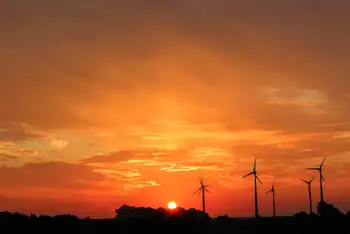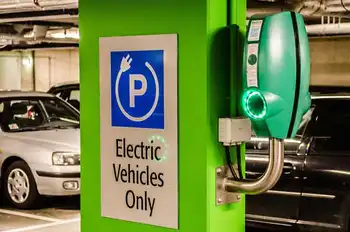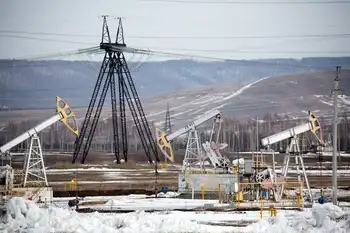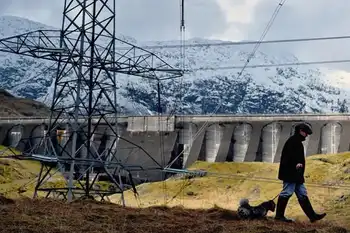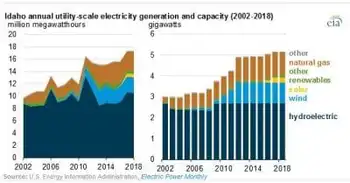First Nations go greener
By News America Media
Arc Flash Training CSA Z462 - Electrical Safety Essentials
Our customized live online or in‑person group training can be delivered to your staff at your location.

- Live Online
- 6 hours Instructor-led
- Group Training Available
Wind farm developers have been knocking on First Nation doors, and promising revenues derived from partnerships, job creation and touting environmentally friendly philosophies, which coincide with First Nation cultural beliefs. First Nations have what developers want – land.
The wind development market has been exploding onto CanadaÂ’s energy industry stage over the past nine years.
According to the Canadian Wind Energy Association, CanWEA, between 2000 and 2006, the market saw an average annual growth rate of 51 percent, which will continue growing to match provincial and federal targets to increase renewable energy sources on the grid.
According to CanWEA, wind farms in Canada have a capacity of 2,775 MW. ThatÂ’s enough to power more than 84,000 homes or equivalent to about one percent of CanadaÂ’s total electricity demand. Typically, one wind turbine averages about two megawatts and can produce enough electricity to meet the yearly needs of about 500 homes.
New laws make it mandatory for First Nations to be consulted about any development going on in traditional lands. OntarioÂ’s Green Energy Act includes a duty to consult clause, to be interpreted like section 35 of the Constitution Act, recognizing aboriginal treaty rights; it also includes about four other subclauses and a section laying the groundwork ensuring First Nation participation in the green energy industry.
In Ontario, there are many wind projects – at least three in Anishinabek territory and one with the Association of Iroquois and Allied Indians.
Wasauksing First Nation continues negotiations with Skypower, which currently has more than 200 projects at various stages of development in North America.
Wasauksing Chief Shane Tabobondung said there are six test towers up around the island in Georgian Bay, near Parry Sound. “The first tower went up in 2004, and after a year-and-a-half, we posted the wind date, and soon after that, there were six developers knocking on our door to do business.”
After examining their options, they chose to partner with Skypower. Tabobondung said there’s a lot of legwork remaining – an environmental study needs to be conducted, along with more community consultation before turbines are put up in the community. He said they applied for a 100 MW project, and are now possibly looking at something much lower, in the range of 36 MW.
He’s confident the project will pave the road to economic independence for the community. He said it’s going to be a 25-year deal with the option of renewal. “The first 10 of those years will be spent paying the capital costs back.” Tabobondung hopes the community will see more than $1 million a year in revenue until the partnership grows, including ongoing employment. It’s still not known how many wind turbines will be put up in unpopulated parts of the community, because, “ultimately, it’s up to the community on the size of the project,” Tabobondung said.
The wind farm business is not something built overnight, itÂ’s estimated that most projects take eight to 10 years to get off the ground before the first turbine is installed. Wasauksing First Nation is entering its seventh year.
Meanwhile, about 90 kilometers north, off Highway 69, also along Georgian Bay, Henvey Inlet First Nation is negotiating a deal with Wind Dancer on a 200 to 400 MW project. The community is forging ahead with a fairly ambitious schedule. Ken Noble, HIFN special projects coordinator is hoping to have a test tower up by the end of summer and the first turbine up in about three years. The community would also own 51 percent in the partnership.
That percentage is an astounding figure compared to the norm in the wind industry. “From a conventional sense, most wind power developers use a formula based on three percent of the profits going to the landowner, in addition to general term lease payments that would be made on an annual basis,” states a report by Joseph Linkevic, wind energy consultant and attorney.
And again, there’s hope for economic sustainability. Noble said the project will provide the community with a level of economic independence it does not presently possess. He said the project will allow Henvey to enhance currently underfunded programs such as health and housing along with social and cultural programs. “After the project is up and going, the community could see annual net revenues of between $10 million and $15 million in our first phase.”
Noble, like Tabobobung said there will be short and long term employment through the project.
Noble said there would also be spin off benefits – a project this large will benefit surrounding villages. He hopes the growth will attract members to move home, and keep youth in the community after they acquire an education.
Wasauksing Elder Aileen Rice hopes to see youth retention as well as a booming economy. If all goes well, and Wasauksing sees a wind farm in the community, Rice hopes people will move home and work; “right now young people who go away to finish school stay there because there are no jobs here.”
Brookfield Renewable Power, another player in the green energy business, has also been partnering with First Nations, and has a senior advisor of aboriginal affairs on staff, John Kim Bell, who said itÂ’s a good time for First Nations to get into the industry, especially with governmentÂ’s duty to consult.
Brookfield is in talks with many First Nations, but wonÂ’t say how many, because of confidentiality agreements. Burk Gursoy, director of wind development at Brookfield said they are about to sign a Memorandum of Understanding with Batchewana First Nation, in Sault Ste. Marie, bordering the U.S, and are working with Pic Mobert First Nation in northwestern Ontario.
Linkevic, based in British Columbia, agreed that “any deal with regard to exploring wind power as an economic development venture is great for any First Nation which has the land and wind resource to be able to tap into it easily.”
However, he points out that these kinds of projects may not generate a great number of jobs, but long term economic spin off benefits are sufficient for First Nation communities to ponder partnerships in the wind industry.
Linkevic said developers have much less red tape to go through. “In some jurisdictions there can be as many as 11 levels of regulatory regime to get consent/permission/approval from, while on most Indian reserves there is the band government and the government of Canada through Indian affairs.”
He said less red tape could mean more developments on-reserve, “particularly if a First Nation takes the bull by the horns and develops its own approval systems.”






